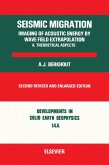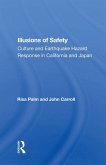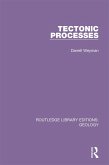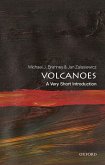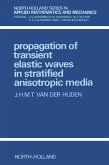Methods in Computational Physics, Volume 12: Seismology: Body Waves and Sources is a six-chapter text that covers the numerical solution of some major problems on seismic body wave propagation and generation in the Earth.
Chapter 1 considers the power of the computer to trace out detailed seismic response by means of ray theory, based from the results gathered in Soviet Union and the Continent. Chapter 2 exposes the finite difference methods employed to obtain complete theoretical seismograms for a source in a layered half-space, in wedges, and in a sphere, along with an outline of normal mode solutions for a source in a sphere and the ray expansion method. Chapter 3 discusses the theory and method of solution of the signals diffracted by the Earth's core using the response integral, the differential equations, and boundary conditions. This chapter deals also with the method of finding numerically the reflection coefficient in an inhomogeneous model. Chapter 4 describes a method for finding seismic velocity distributions that fit a given set of data and having found such distributions how to quantitatively assess their degree of uncertainty, such as their uniqueness. Chapter 5 surveys the theory of an observational technique for studying earthquake mechanism, while Chapter 6 provides a summary of theories of seismology and the important computational techniques together with some of their applications to seismic-source studies.
This book will be greatly appreciated by geoscientists, physicists, and mathematicians.
Chapter 1 considers the power of the computer to trace out detailed seismic response by means of ray theory, based from the results gathered in Soviet Union and the Continent. Chapter 2 exposes the finite difference methods employed to obtain complete theoretical seismograms for a source in a layered half-space, in wedges, and in a sphere, along with an outline of normal mode solutions for a source in a sphere and the ray expansion method. Chapter 3 discusses the theory and method of solution of the signals diffracted by the Earth's core using the response integral, the differential equations, and boundary conditions. This chapter deals also with the method of finding numerically the reflection coefficient in an inhomogeneous model. Chapter 4 describes a method for finding seismic velocity distributions that fit a given set of data and having found such distributions how to quantitatively assess their degree of uncertainty, such as their uniqueness. Chapter 5 surveys the theory of an observational technique for studying earthquake mechanism, while Chapter 6 provides a summary of theories of seismology and the important computational techniques together with some of their applications to seismic-source studies.
This book will be greatly appreciated by geoscientists, physicists, and mathematicians.
Dieser Download kann aus rechtlichen Gründen nur mit Rechnungsadresse in A, B, BG, CY, CZ, D, DK, EW, E, FIN, F, GR, HR, H, IRL, I, LT, L, LR, M, NL, PL, P, R, S, SLO, SK ausgeliefert werden.



